The unique environments at the Polar regions, combined with our scientific understanding and technological expertise, present exciting opportunities for innovation. Explore this section to get a taste of what is going on, and become inspired to work with us.
If you want to know more about any of the science and technology areas listed below, please contact us at aurora@bas.ac.uk.
Examples of BAS expertise for innovation
1. Imaging from moving platforms: the Ship Imager
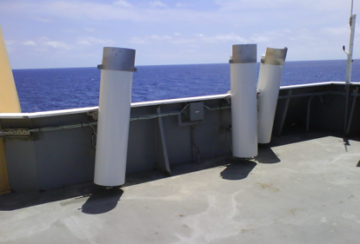
BAS scientists and engineers have developed ways to obtain long-exposure images from a rolling ship. We need these images to detect faint infra-red light emitted by gravity waves in the atmosphere – understanding how they transfer energy from lower to upper atmosphere improves global weather modelling and underpins safe space flight.
This technology uses the ship’s motion to scan the sky with three angled photo diodes. The ship-borne imager uses a novel system of 3 one-degree field of view imagers (radiometers) and the pitch and roll of the ship to scan the sky. The imagers will be observing gravity wave perturbations in a layer of airglow at around 90km altitude. Airglow is the term given to the weak emission of light by different gas layers in the atmosphere. As gravity waves pass through this airglow layer they alternately compress and rarify it, resulting in a variation in the airglow emissions. Using these observations it is possible to determine the characteristics of the gravity waves.
2. Accurate weighing on moving platforms: the Shipboard Balance
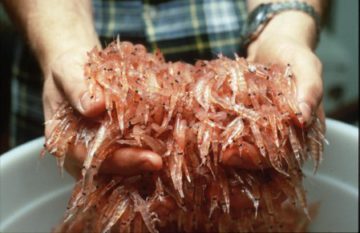
To assess ecosystem health and give advice for fishery management, BAS scientists need to weigh individual krill with high accuracy, no matter how much the ship is rolling and pitching. The shipboard balance uses matched loadcells and weights to mitigate for the forces created by the movement of the ship.
3. Weighing ballistic masses: the Penguin Weighbridge
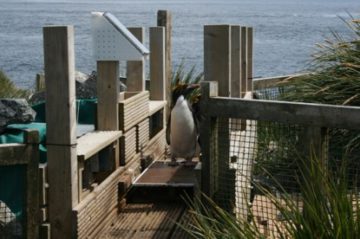
How do you weigh a hopping penguin? This was a challenge facing BAS scientists monitoring penguin populations at Bird Island Research Station in South Georgia. To asssess the impact of environmental change on feeding behaviour, biologists needed to measure exactly how much individual penguins were eating.
The weighbridge captures the force profile of each bounce to measure the direction of travel and mass of individual tagged penguins pre- and post-feed.
4. Autonomous Underwater Observation: Gliders
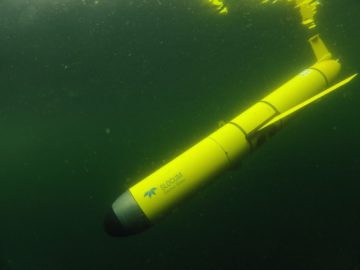
To make sustained underwater observations of moving targets, such as assessing ecosystem health to provide advice for fisheries management, we need to find, track and record key parameters of marine species such as krill with a high degree of autonomy. BAS scientists combine custom-built sensors mounted on long-duration, underwater gliders with advanced data processing techniques.
5. Sensor platforms for challenging environments: the Wavebuoy
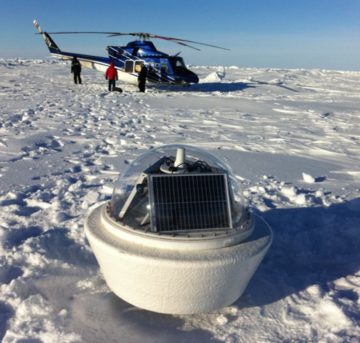
To help users of polar waters plan operations and mitigate risk, it is necessary to measure wave power in icy waters, and understand what influences the breakup of sea-ice. We have designed an autonomous sensor platform that survives crushing sea ice. Using accelerometers, inclinometers, GPS and a webcam, the movement of ice and water can be tracked remotely throughout the seasons.
6. Remote survey of wildlife: UAVs
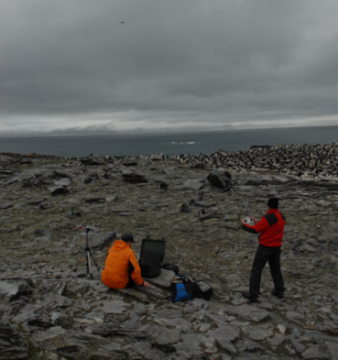
How can we survey wildlife without disturbing it? To assess ecosystem health and identify how population dynamics are affected by environmental change, we need to survey colonies without the animals being disturbed. Our multi-rotor UAVs are fitted with high resolution cameras that capture whole colonies quickly from a safe distance.
Satellite images give us unprecedented access to large-scale information about wildlife that is difficult to survey. BAS scientists have developed algorithms to identify and count whales, penguins and large sea birds from satellite images.
7. Detecting boundary layers: Ice Radars
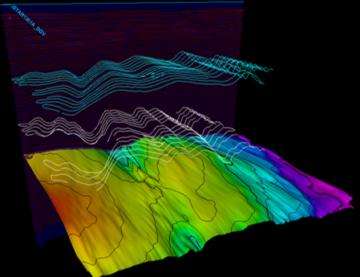
How can the boundaries between air, ice, water and rock be detected? Answering this question allows us to determine how much freshwater is locked up in ice sheets and glaciers. For Antarctica and Greenland, this helps us predict maximal sea level rise through global warming. For the Himalayas and Andes, it underpins long-term water management and hydropower investment decisions.
Our lightweight, rugged time-of-flight radars detect the ice surface, the bedrock and the internal structure of the ice, allowing us to calculate ice volumes and the way the ice deforms.
Melting rates at the base of floating ice shelves help us predict how icesheets contribute to sea level rise. Visibility of changes in groundwater levels underpin water management in arid regions. Our autonomous phase-sensitive radar can detect millimetre changes in layers that are tens to hundreds of metres thick.
8. Low power, low maintenance data collection
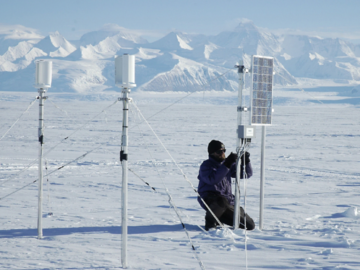
Much BAS research requires the ability to sustain data collection in harsh, remote environments. Our engineers develop ruggedised instruments with minimal power usage and maintenance requirements.